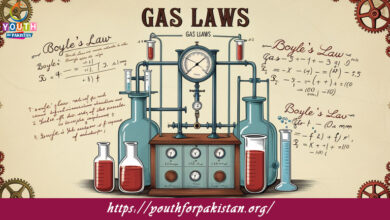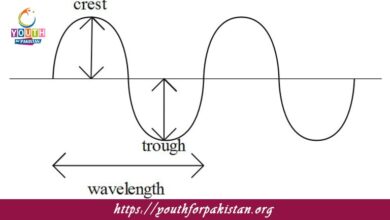Newton’s Laws Of Motion MDCAT MCQs with Answers

Welcome to the Newton’s Laws Of Motion MDCAT MCQs with Answers. In this post, we have shared Newton’s Laws Of Motion Multiple Choice Questions and Answers for PMC MDCAT 2024. Each question in MDCAT Physics offers a chance to enhance your knowledge regarding Newton’s Laws Of Motion MCQs in this MDCAT Online Test.
Newton’s Laws Of Motion MDCAT MCQs Test Preparations
Newton’s First Law of Motion states that an object will remain at rest or in uniform motion unless acted upon by:
a) A net force
b) A gravitational force
c) An external force
d) A normal force
According to Newton’s Second Law of Motion, the acceleration of an object is directly proportional to the:
a) Net force acting on it
b) Mass of the object
c) Velocity of the object
d) Gravitational pull on it
Newton’s Third Law of Motion is also known as the law of:
a) Inertia
b) Acceleration
c) Action and Reaction
d) Gravitation
According to Newton’s First Law, an object in motion will:
a) Stop moving if no external force acts on it
b) Continue in motion with constant velocity if no external force acts on it
c) Accelerate if no external force acts on it
d) Change direction if no external force acts on it
An example of Newton’s Third Law of Motion is:
a) A rocket accelerating in space
b) A car accelerating on a highway
c) A swimmer pushing off from the wall of a pool
d) An object falling under gravity
If a person in a car suddenly accelerates, they feel pushed back against the seat because of:
a) Inertia
b) Friction
c) Gravitational force
d) Action-reaction pairs
According to Newton’s First Law, an object will continue to move in a straight line at constant speed unless:
a) It experiences a net force
b) It changes its mass
c) It experiences friction
d) It is subjected to a collision
According to Newton’s Second Law, if the force acting on an object is doubled while the mass remains constant, the acceleration:
a) Doubles
b) Halves
c) Stays the same
d) Quadruples
The force exerted by the ground on a book resting on it is known as:
a) Tension
b) Normal force
c) Frictional force
d) Gravitational force
When you sit in a chair, the chair exerts an upward force on you. This is an example of:
a) Newton’s First Law
b) Newton’s Second Law
c) Newton’s Third Law
d) None of the above
A ball is thrown upwards. At the highest point of its trajectory, the acceleration of the ball is:
a) Zero
b) Downwards
c) Upwards
d) Equal to its velocity
According to Newton’s Second Law, if the mass of an object is tripled and the force applied is constant, the acceleration:
a) Triples
b) Halves
c) Remains the same
d) Becomes one-third
If two objects collide, the forces they exert on each other are:
a) Equal in magnitude and opposite in direction
b) Unequal in magnitude and opposite in direction
c) Equal in magnitude and in the same direction
d) Unequal in magnitude and in the same direction
When a car makes a sharp turn, passengers feel as if they are being pushed outward. This is due to:
a) Centripetal force
b) Inertia
c) Gravitational force
d) Friction
According to Newton’s First Law, which of the following objects will remain at rest?
a) A book on a table
b) A car accelerating on a highway
c) A satellite orbiting Earth
d) A rocket in space
If you push against a wall, the wall pushes back with:
a) No force
b) A greater force
c) The same force
d) A lesser force
The force that opposes the relative motion of two surfaces in contact is called:
a) Gravitational force
b) Normal force
c) Frictional force
d) Tension
An astronaut in space throws a tool away from him. The astronaut:
a) Moves in the same direction as the tool
b) Moves in the opposite direction of the tool
c) Does not move at all
d) Moves faster than the tool
In the absence of air resistance, a freely falling object:
a) Accelerates at a constant rate
b) Moves at a constant speed
c) Decelerates
d) Moves in a horizontal direction
Newton’s Third Law of Motion explains why:
a) Objects accelerate when a force is applied
b) Objects continue to move at constant velocity
c) Forces come in pairs
d) Objects stay at rest
According to Newton’s Second Law, if you apply the same force to two objects with different masses, the object with the:
a) Greater mass will have greater acceleration
b) Lesser mass will have greater acceleration
c) Greater mass will have lesser acceleration
d) Lesser mass will have lesser acceleration
When a truck collides with a small car, the force experienced by the car is:
a) Greater than the force experienced by the truck
b) Less than the force experienced by the truck
c) Equal to the force experienced by the truck
d) Zero
The normal force on a box lying on a horizontal surface is:
a) Equal to the weight of the box
b) Greater than the weight of the box
c) Less than the weight of the box
d) Unrelated to the weight of the box
According to Newton’s First Law, an object will change its state of motion only if:
a) A net force is applied
b) Its mass changes
c) Its velocity changes
d) It is in a vacuum
If an object’s acceleration is constant, its velocity:
a) Increases linearly with time
b) Decreases linearly with time
c) Remains constant
d) Varies exponentially with time
Newton’s Third Law of Motion applies to:
a) Contact forces only
b) Action and reaction forces
c) Gravitational forces only
d) Frictional forces only
If you drop two objects of different masses from the same height in a vacuum, they will:
a) Hit the ground at different times
b) Hit the ground at the same time
c) Accelerate at different rates
d) Move horizontally
The force of friction between two surfaces is:
a) Always in the direction of motion
b) Always in the direction opposite to motion
c) Perpendicular to the direction of motion
d) Equal to the applied force
In a frictionless environment, if a force is applied to an object, its:
a) Speed remains constant
b) Acceleration remains constant
c) Velocity changes linearly
d) Velocity changes exponentially
When a person jumps off a diving board, they experience:
a) A downward force only
b) An upward force only
c) Equal and opposite forces
d) No forces
An object moving in a circular path experiences a force that is:
a) Directed towards the center of the circle
b) Directed away from the center of the circle
c) Tangent to the circle
d) Perpendicular to the circle
Newton’s Second Law implies that for a constant force, a heavier object will:
a) Accelerate more
b) Accelerate less
c) Accelerate the same
d) Not accelerate at all
A book resting on a table is subject to which of the following forces?
a) Normal force and frictional force
b) Gravitational force and normal force
c) Normal force and tension
d) Gravitational force and tension
When an object moves in a straight line with constant acceleration, its velocity-time graph is:
a) A straight line
b) A curve
c) A horizontal line
d) A vertical line
According to Newton’s Third Law, when you push a wall, the wall pushes you with:
a) A greater force
b) An equal force in the same direction
c) An equal force in the opposite direction
d) No force
A skydiver accelerates downwards due to gravity, but eventually reaches a constant speed known as:
a) Terminal velocity
b) Escape velocity
c) Acceleration limit
d) Maximum speed
The force that causes an object to stay in circular motion is called:
a) Centripetal force
b) Gravitational force
c) Normal force
d) Frictional force
When you pull a sled on a snowy surface, the frictional force between the sled and the snow is:
a) Greater than the pulling force
b) Less than the pulling force
c) Equal to the pulling force
d) Zero
If you are interested to enhance your knowledge regarding Physics, Chemistry, Computer, and Biology please click on the link of each category, you will be redirected to dedicated website for each category.





